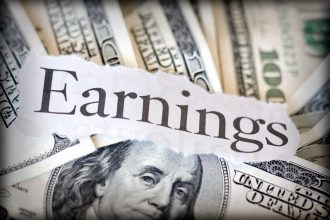Treasury yields rose on Tuesday after a string of better-than-expected U.S. data supported the case for higher-for-longer rates in a still-strong economy.
What happened
-
The yield on the 2-year Treasury
TMUBMUSD02Y,
4.757%
climbed 9.4 basis points to 4.762% after factoring in new-issue levels. That’s one of the highest levels since early March. -
The yield on the 10-year Treasury
TMUBMUSD10Y,
3.766%
rose 4.8 basis points to 3.767% from 3.719% Monday afternoon. -
The yield on the 30-year Treasury
TMUBMUSD30Y,
3.840%
advanced 2.1 basis points to 3.839% from 3.818% as of late Monday.
What drove markets
Data released on Tuesday came in stronger than expected, leading to a jump in Treasury yields.
A consumer-confidence index rose to a 17-month high of 109.7 in June as inflation slowed and there were fewer worries about a recession. In addition, durable-goods orders jumped 1.7% in May and rose for a third month in a row, boosted by demand for passenger planes and new autos, while new home sales surged for a third straight month.
Meanwhile, the S&P CoreLogic Case-Shiller 20-city house price index rose 0.9% in April, as compared with the previous month.
Yields reversed direction from earlier in the day, when data showing sharply cooling inflation in Canada caused 2-, 10- and 30-year yields to drop.
Read: Wall Street investors grapple with how ‘last mile’ of U.S. inflation will play out
This week’s most important U.S. data is likely to be Friday’s personal-consumption expenditures price index for May, the Federal Reserve’s favorite inflation indicator.
Markets are pricing in a 77% probability that the Fed will raise its policy interest rate by 25 basis points to between 5.25%-5.5% on July 26, according to the CME FedWatch Tool. The central bank is not expected to take its fed-funds rate target back down to around 5% until next year, according to 30-day Fed Funds futures.
What analysts are saying
“We expect sovereign yields in the U.S. and Germany to rise this week amid the Sintra forum [or European Central Bank’s forum on central banking in Sintra, Portugal], where central bankers will likely reinforce their resolution to fight inflation,” said strategists at Saxo.
“Our expectation is for the front part of the yield curves to resume its rise towards 5% in the U.S. and 4% in Germany while long-term yields remain underpinned by weak growth data,” they wrote in a Tuesday note.
See: IMF puts blame on greedflation for rise in prices
Read the full article here




